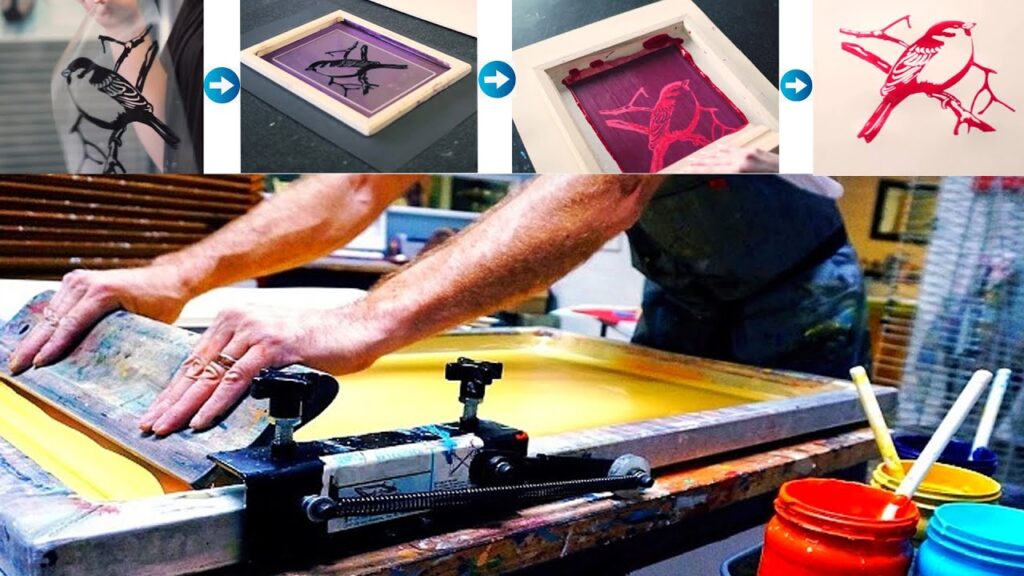The transition from a hobbyist to an entrepreneur is a journey filled with learning, determination, and passion. In the vibrant world of screen printing, countless individuals discover an artistic outlet that combines creativity with functionality. This journey involves more than just converting your passion into profits; it’s about embracing a new lifestyle and sharing your craft with the world.
Screen printing, initially a favorite pastime, can evolve into a lucrative business opportunity. Transforming a hobby into a business demands meticulous planning, a deep understanding of the market, and a strategic approach. From crafting a foolproof business plan to understanding your target audience, every step is crucial to successfully launching your venture in the competitive screen printing industry.
Discover Your Passion for Screen Printing

Everyone has a unique story about how their love for screen printing morphed into a business idea. Personal experiences and anecdotes bring your story to life, adding a touch of authenticity. Whether it’s the first design you ever created or the satisfaction derived from seeing your ideas materialize, these experiences form the backbone of your venture.
Screen printing offers an exceptional medium to express your creativity and unique perspective. It’s essential to keep your passion burning, fueling your commitment to delivering quality products. The bond between your craft and your personal journey is the foundation upon which your business will thrive.
Market Research and Target Audience
Conducting thorough market research is paramount in establishing the viability of your screen printing venture. It’s essential to identify gaps in the market, consumer preferences, and emerging trends. Your research will guide your business strategies and help you create products that resonate with your audience.
Identifying your target audience is equally crucial. Whether you’re focusing on customized t-shirts for local bands or creating unique apparel for a niche market, understanding your customers’ needs and preferences will help in designing products that appeal to them and meet their specific requirements.
Crafting a Business Plan
A well-structured business plan is the blueprint for your screen printing venture. It should encompass various components such as startup costs, pricing strategy, revenue projections, different screen printing supplies, and operational plans. These details will serve as a roadmap, guiding you through the intricacies of launching and running your business successfully.
The startup costs involve investment in equipment, materials, workspace setup, and initial marketing efforts. A robust pricing strategy should reflect your costs, competitive analysis, and perceived customer value. Accurate revenue projections, grounded in market research and realistic assumptions, will help in securing financing and managing cash flows efficiently.
Legal Considerations

Navigating the legal landscape is critical when establishing your screen printing business. This involves business registration, obtaining the necessary permits, and considering intellectual property rights. Understanding and complying with the legal requirements will protect your business from potential liabilities and disputes.
Business registration solidifies your venture’s legal status, allowing you to operate within the law. Securing the right permits ensures adherence to local regulations and industry standards. Intellectual property considerations safeguard your designs and innovations, providing a competitive edge in the market.
Choosing the Right Equipment
Selecting appropriate equipment is vital to your screen printing operations. The market offers a diverse range of machinery catering to different needs and scales. From manual screen printing presses to automated machines, your choice of equipment will significantly impact your production capacity, quality, and operational efficiency.
The equipment you choose should align with your business goals, budget constraints, and production requirements. Researching various options, considering their pros and cons, and assessing your specific needs will aid in making an informed decision.
Sourcing Quality Materials
The essence of screen printing lies in the amalgamation of designs and materials. Utilizing high-quality materials is non-negotiable, as it affects the end product’s durability, appearance, and customer satisfaction. Establishing relationships with reliable suppliers ensures a consistent supply of premium materials, allowing you to maintain high-quality standards.
Researching potential suppliers, evaluating their offerings, and negotiating favorable terms are essential steps in securing quality materials. Building strong partnerships with suppliers will contribute to your business’s sustainability and success.
Designing and Printing Techniques

In the creative realm of screen printing, exploring diverse techniques and design options is crucial. The industry is teeming with innovations and artistic approaches, enabling you to create unique and marketable designs. Mastering various printing techniques and staying abreast of design trends will enhance your product range and appeal to a broader audience.
Setting Up Your Workspace
Creating an efficient and organized workspace is pivotal in optimizing your screen printing operations. Your workspace should facilitate smooth workflow, accommodate your equipment, and provide adequate storage for your materials. Implementing safety precautions and equipping your workspace with necessary safety gear is essential in creating a secure and productive environment.
Building an Online Presence
In today’s digital age, establishing an online presence is indispensable for any business. A professional website and active social media presence serve as platforms to showcase your work, connect with your audience, and enhance your brand’s visibility. Implementing effective online strategies will amplify your reach and foster engagement with potential customers.
Designing a user-friendly website, optimizing it for search engines, and maintaining a consistent and appealing social media presence are essential steps in building and sustaining your online footprint. These digital platforms act as gateways for customers to discover your brand and engage with your products.
Marketing and Promotion

Developing and executing comprehensive marketing strategies are crucial in attracting your target audience and driving sales. Leveraging local marketing, online advertising, and promotional activities will enhance your brand’s visibility and reputation. Understanding your audience’s preferences and tailoring your marketing efforts to resonate with them will boost your brand’s appeal and customer loyalty.
Scaling and Growth
Once your screen printing business is established, exploring avenues for scaling and growth is essential. Whether it’s expanding your product line, offering additional services, or exploring new markets, strategic growth initiatives will propel your business forward. Assessing market trends, customer feedback, and internal capabilities will guide your expansion plans and ensure their success.
Conclusion
Transitioning from a screen printing hobbyist to a successful entrepreneur involves a series of deliberate steps and informed decisions. From discovering your passion and conducting market research to crafting a detailed business plan and building an online presence, every aspect plays a vital role in the realization of your screen printing venture. Legal considerations, equipment choices, and workspace setup are integral components of launching your business, impacting your operations and overall success.
